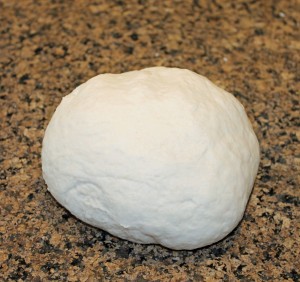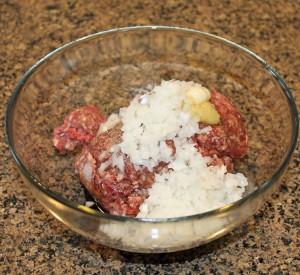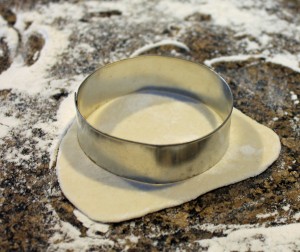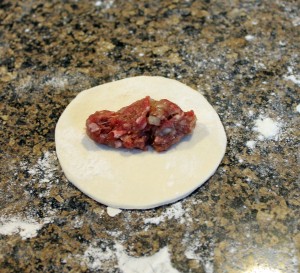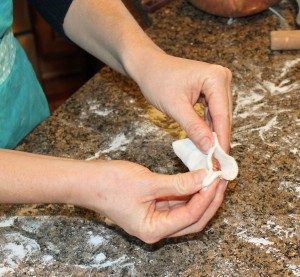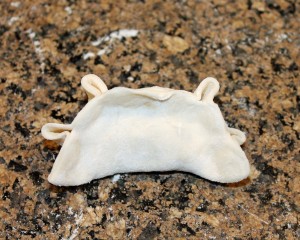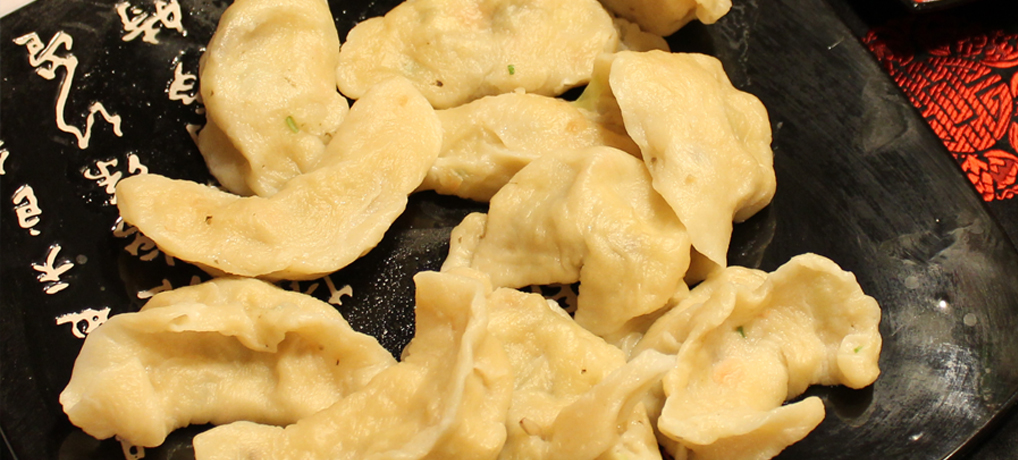 Dumplings, called jiaozi (jaow–zuh) are one of the most important parts of a traditional Chinese New Year celebration. Luckily, they are also delicious and easy to make. This recipe is the one we learned from our Ayi (nanny) in China, and is still our favorite.
Dumplings, called jiaozi (jaow–zuh) are one of the most important parts of a traditional Chinese New Year celebration. Luckily, they are also delicious and easy to make. This recipe is the one we learned from our Ayi (nanny) in China, and is still our favorite.
Most Chinese people prefer pork dumplings, but since Ayi is a Muslim and does not eat pork, she would make us these fantastic beef jiaozi. After several tries and many breaks making her stop to measure ingredients (she never does) for our benefit, we learned to make dumplings that taste as delicious as hers, though they look quite a bit uglier. She still laughs when we send her pictures of our jiaozi, and the technique of folding the dough does take a little practice to get your dumplings looking “pretty,” but even the ugliest dumpling will taste fantastic.
Ayi’s Beef Jiaozi
Download a printer-friendly PDF
1 lb ground beef
½ large onion, finely chopped
2 inches ginger root, finely minced
1 t garlic, finely minced
1 t salt
2 T soy sauce
2 T sesame oil (or if you don’t have any, soy oil)
3 c all purpose flour
1 c (plus a bit) cold water
Combine flour and enough water to make a fairly stiff dough. Knead dough for 2-3 minutes. Dough should be smooth, very elastic and dry enough to roll without sticking too much.
In another bowl, thoroughly combine all remaining ingredients.
Tear off rounded tablespoons of dough and roll out very thin (1/8 inch) circles about 3 inches in diameter on floured board or counter.
Place 1 rounded teaspoon of meat mixture in the center of each circle. Now comes the tricky bit. You don’t want to simply create a half circle, you want your dumplings to have a distinctive shape. The reason dumplings are considered to be good luck for CNY is that their shape resembles that of an old-fashioned Chinese coin purse, so they are believed to bring prosperity in the new year.
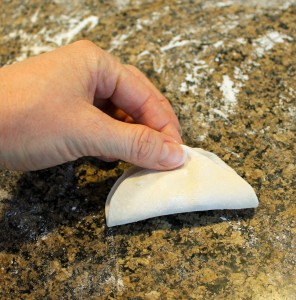 To create this shape, fold the dough over the filling and pinch together the center of the circle.
To create this shape, fold the dough over the filling and pinch together the center of the circle.
Do not press the edges together. Instead, fold the edges in to create an arched shape to the dough between the edge and the center, like this:
Repeat on both sides, then pinch once more in the middle of the arch, so your jiaozi looks like this:
Now seal up the ears, creating pleats where each ear is folded over and sealed. Your finished dumplings look like this: See how they “stand up” instead of laying flat, because of the pleated edge? Perfect.
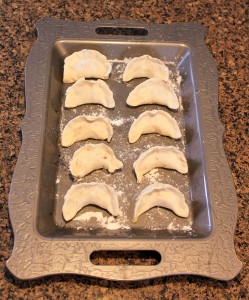 Now comes the moment of truth. Do you want northern jiaozi or southern jiaozi? Beijing or Shanghai? These are serious decisions.
Now comes the moment of truth. Do you want northern jiaozi or southern jiaozi? Beijing or Shanghai? These are serious decisions.
Americans tend to cook their dumplings the Shanghai way, using a fry/steam combination that yields a sticky, slightly crunchy wrapper, which is why many people call them potstickers.
Beijingren prefer their dumplings boiled, and will look scornfully on Americans who don’t know better than to fry their dumplings. (I speak from experience.) Try both ways and see what you prefer, but if you want to have an authentic Hui (Beijing Muslim) style jiaozi experience, I recommend boiling.
Dumplings cook fast! Bring a large wide pot to a rolling boil, and quickly slip 10-12 jiaozi into the water using a slotted spoon or spider strainer (a great investment if you are going to make a lot of dumplings.)
Reduce heat to medium and cook jiaozi at a slow boil for about 5 minutes. Jiaozi will sink to begin with, and you need to stir very gently to make sure they don’t stick to the bottom of the pot, but as they cook they will float to the surface.
After 5 minutes, skim the dumplings out with your strainer or slotted spoon and let them drain for one minute in a colander over a plate (so they don’t get soggy). Start the next batch of dumplings and move the draining ones to a plate or platter for serving.
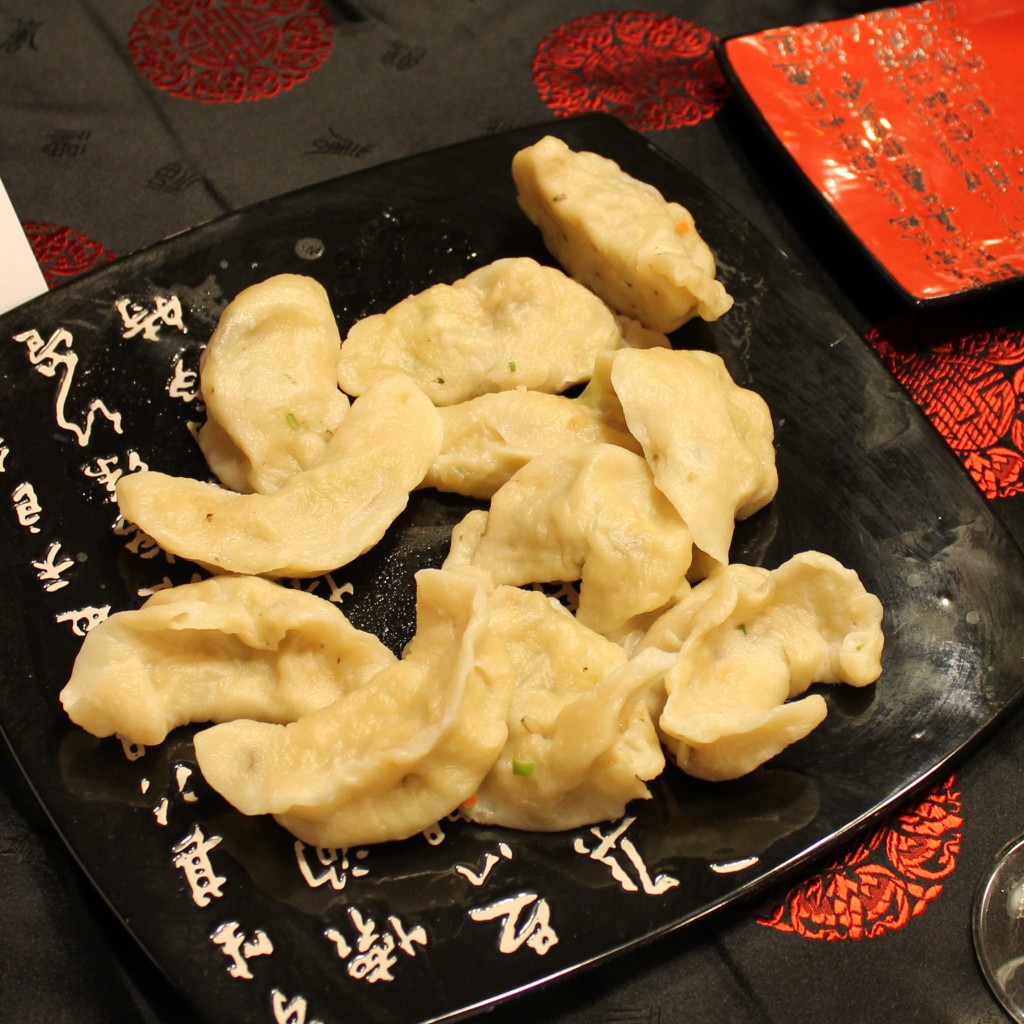 Serve dumplings hot with Chinese black vinegar for dipping! This is a delicious addition to all your Chinese cooking, and a necessity for proper dumpling making. You can mix it with soy sauce to make dipping sauce, or just use it straight (my personal favorite).
Serve dumplings hot with Chinese black vinegar for dipping! This is a delicious addition to all your Chinese cooking, and a necessity for proper dumpling making. You can mix it with soy sauce to make dipping sauce, or just use it straight (my personal favorite).
Now you know everything you need to host a dumpling-making party for Chinese New Year Eve! But pro tip–make a bunch of extra dumplings early in the day so you can just boil them up at the party. Jiaozi are slooooooooooooow, and though guests have a great time making them, they don’t usually make enough for everyone to actually eat. (This recipe makes about 50+ dumplings.)
Gong Xi Fa Cai! Happy New Year!
Want more ideas for the best Chinese New Year Party on the block? Check out the Highchair Travelers Pinterest Page and our post on How to Celebrate Chinese New Year!
